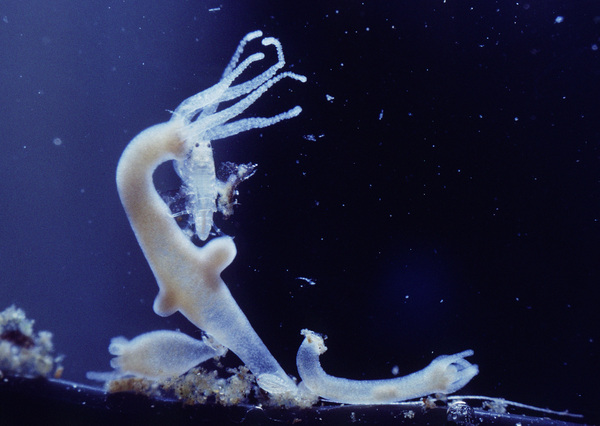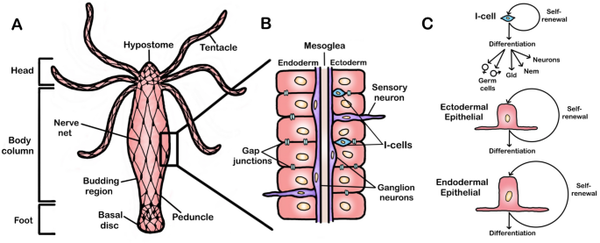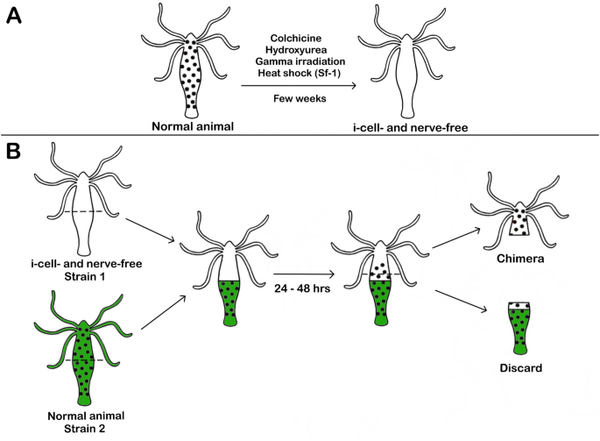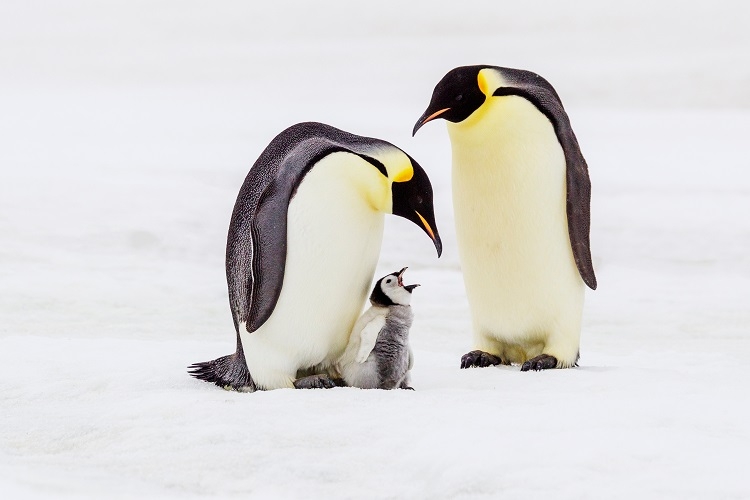In the animal kingdom, there are many incredible examples of regeneration, from lizards growing back their tails to starfish regenerating lost limbs. But when it comes to something truly extraordinary, few creatures can match the ability to regrow their own head. So, what animal can perform this seemingly impossible feat? The answer lies in the fascinating world of hydras — tiny, freshwater organisms that can regenerate not just limbs but their entire heads.
This remarkable ability makes the hydra one of the most intriguing animals in the natural world, and in this article, we’ll dive deep into how and why these creatures can pull off such an incredible feat. Along the way, we’ll explore the science behind regeneration and what makes hydras so special.

The hydra is a small, simple organism that belongs to the phylum Cnidaria, a group that also includes jellyfish and coral. These creatures are typically only a few millimeters long and live in freshwater environments such as ponds, lakes, and streams. Despite their size, hydras possess an astonishing biological ability — they can regenerate almost any part of their body, including their heads!
Hydras are tubular in shape, with a foot-like structure at one end that attaches to surfaces and a mouth surrounded by tentacles at the other. These tentacles are equipped with stinging cells called nematocysts, which hydras use to capture prey like tiny crustaceans and plankton.

The key to a hydra’s regeneration abilities lies in its stem cells. Unlike most animals, hydras have a large population of pluripotent stem cells, which means that these cells can turn into any type of cell needed for regeneration. Whether it’s a tentacle, a body segment, or even a head, hydras can use these stem cells to regrow the missing part.
Here’s how it works:
Head Amputation: If a hydra’s head is severed or damaged, the process of regeneration begins almost immediately.
Stem Cell Activation: Specialized stem cells in the hydra’s body are activated and start migrating to the wound site.
Rebuilding the Head: These stem cells differentiate into the necessary types of cells — nerve cells, muscle cells, and digestive cells — to recreate the head. Within a matter of days, the hydra will have fully regrown its head, complete with a mouth and tentacles.
What’s truly fascinating is that the new head is just as functional as the original, allowing the hydra to continue feeding and interacting with its environment as if nothing had happened.

Regeneration is not unique to hydras, but the extent of their regenerative capabilities is extremely rare. Many animals, like salamanders, starfish, and certain types of worms, can regenerate parts of their bodies, but very few can regenerate a whole head. So, why can hydras do it when others can't?
There are several reasons why hydras are special:
Abundance of Stem Cells: Hydras have an unusually high number of stem cells, which allow them to regenerate more extensively than other organisms.
Simplicity: Hydras are relatively simple organisms with no complex organs like brains or hearts. This simplicity makes it easier for them to regenerate their bodies.
Cellular Rejuvenation: Hydras are capable of constantly replenishing their cells, which gives them another unique advantage — they don't age in the same way other animals do. Hydras are effectively biologically immortal, as long as they avoid injury or predation.
Efficient Healing Mechanism: Hydras have evolved a highly efficient healing mechanism that allows them to quickly recover from damage. This is crucial for survival in their often precarious environments.
While the idea of humans or other animals regenerating complex structures like heads remains firmly in the realm of science fiction, studying creatures like hydras provides valuable insights into the mechanisms of regeneration. Scientists are fascinated by how hydras and other regenerating animals are able to activate stem cells to rebuild body parts, and they hope that understanding these processes could eventually lead to breakthroughs in regenerative medicine.
For example, scientists are exploring how stem cells could be used to repair damaged organs, regenerate tissues, and even heal spinal cord injuries in humans. While we’re still far from regenerating entire heads, the field of regenerative biology is advancing rapidly, and hydras may hold the key to some of the most significant medical discoveries of the future.
Though hydras are the stars when it comes to head regeneration, they aren’t the only animals capable of amazing feats of regrowth. Here are some other animals that demonstrate extraordinary regenerative abilities:
Axolotls: These aquatic salamanders can regenerate entire limbs, parts of their spinal cords, hearts, and even parts of their brains.
Planarian Flatworms: If you cut a planarian flatworm in half, each half can regenerate into a complete worm, making them masters of regeneration.
Starfish: Starfish can regrow entire arms if they lose them to predators, and in some cases, a lost arm can regrow into a whole new starfish.
Zebrafish: These fish can regenerate damaged heart tissue, making them an important model for studying heart regeneration in humans.
The hydra’s ability to regrow its head places it among the most unique creatures in the animal kingdom. Thanks to its abundant stem cells, simple body structure, and efficient regeneration processes, the hydra can survive injuries that would be fatal to most other animals. This tiny freshwater organism continues to intrigue scientists and inspire new lines of research in the field of regenerative medicine.
Although it may be some time before humans unlock the full potential of regenerative capabilities like those of the hydra, studying these incredible creatures offers hope for advancements in healing and regeneration that could change the future of medicine. So the next time you think about regeneration, remember that in the world of head regrowth, the humble hydra reigns supreme!
animal tags: Hydra
We created this article in conjunction with AI technology, then made sure it was fact-checked and edited by a Animals Top editor.
you may also like

Tilapia is a common ornamental fish. The following are some tips for raising tilapia: 1. Prepare a suitable fish tank: Tilapia needs to live in a suitable environment. Choose a fish tank that is large enough to accommodate all the fish, with adequate hiding places and ade...

The most common pet cat species1. Scottish Fold:In 1951, a female cat gave birth to a litter of kittens with folded ears on a farm in the UK. The owner of the female cat gave some of the kittens to a local shepherd for raising, and after witnessing the kittens' folded ears, the shepher...

The white jade turtle is a very beautiful turtle species. If you want to make their shells more white, you can try the following methods: 1. Provide a proper diet: White jade turtles need adequate minerals and nutrients to stay healthy and help their shells become harder and whiter....

The idea that birds are descendants of dinosaurs was first proposed by Hussein, a staunch defender of evolution known as "Darwin's hound" more than 100 years ago.Hussein was born in England in 1825. Due to his poor family background, he only received two years of formal education betwe...

Dinosaurs are a type of extinct reptiles that lived in the Jurassic, Cretaceous and other periods on Earth. According to research by scientists, there are currently more than 1,000 known species of dinosaurs. Here are some of the common species: 1. Sauropod dinosaurs: suc...

The frog is an expert at catching insects. It squatted on the edge of the pond, motionless, and stared at the various small insects flying towards it, without any expression. Suddenly, the frog leaped up like an arrow from a string, and its whip-like tongue rolled out of its mouth, eating the inse...

Penguins are often associated with cold, icy regions, but there's a common misconception that these fascinating creatures live in the Arctic. In reality, penguins do not inhabit the Arctic, despite the fact that both polar regions share frigid climates. So, why don’t penguins live in the Arctic...

Snails are common molluscs that usually feed on plant debris, humus and algae. Here’s a detailed look at how to feed snails: 1. Choose the right food Snails can eat a variety of plant materials, such as fresh vegetable leaves (lettuce, spinach, greens, radish leaves, etc....
Email: jsset668#gmail.com (change # to @) Please indicate your purpose of visit! Guangdong ICP No. 2022053326 XML| map| Chinese

